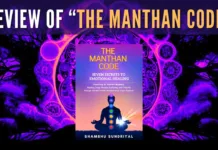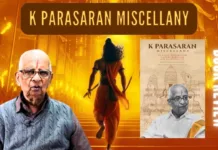
BJP needs rebranding, Nitin Gadkari is the best option
We have seen many analyses of the 2024 Lok Sabha (LS) election results by different analysts.
The broad conclusions I draw are as follows. I don’t claim to have a deeper understanding than anyone else, much less, than the top leadership of BJP. I’m merely sharing my thoughts.
Though the election results in 2014, 2019, and 2024 may seem different, in my humble opinion, they are broadly similar, with only minor differences. This is evident from the nearly constant vote share percentage of the BJP (and even that of NDA, also taking into account the slightly changed composition of its alliances).
In 2014, the opposition was divided, In 2014, the opposition was divided, and in 2019, the Indian military carried out surgical strikes which created nationalistic pride and sentiments in favour of the BJP. In 2024, pushed to a corner, the opposition managed to unite to some extent in the final moments. This consolidation helped them improve their IOU (Index of Opposition Unity) and seat share relative to the NDA. The vote share of NDA, per se, took only a small dip.
We must also consider a small yet significant percentage of voters who cast their votes tactically, supporting the candidate most likely to defeat the party they opposed, which was mostly the BJP in 2024.
These explain the moderate setbacks in seats for the BJP in key states like UP, Maharashtra, Karnataka, and West Bengal, which turned against the BJP (and NDA) in terms of seats in the 2024 elections.
The Modi euphoria appears to be waning in some states, and it appears unlikely to return to its previous levels in future elections. A degree of fatigue seems to have set in among a small section of the BJP’s previous voters, driven by expectations that exceed delivery.
An increasing number of young peoplealsodemand better-paying jobs,particularly government jobs. It’s another matter that the unemployment and under-employment problems are endemic, given the dimensions of the problem and its chronic nature. Surely, the opposition has no solution to offer in terms of better-paying private-sector jobs, nor government jobs. If anything, at least the current government has the intention to solve it as best as possible.
Over time, some voters have forgotten the challenging days the nation was under the UPA (and other previous coalitions). Some other voters believe that their best course of action is to vote for the party/ alliance that makes the highest bids in terms of poll promises, regardless of their intent or competence.
Additionally, there are new voters who have not experienced previous governments in action, and hence their votes may be cast based on less informed decision-making.
There is a risk that even a slight shift in voter preferences could lead to an opposition alliance coming to power.
Who knows – God forbid – we might even have Rahul Gandhi as our next PM. Then much of the progress made over the past decade on all fronts, reforms, economy, internal & external security, long-term vision, etc could be undone because the opposition parties lack good intentions and competence while being sky high on corruption.
The result could be disastrous, with the Indian government becoming a puppet of foreign powers.
If BJP should retain power at the center even in the current term, it must make plans for all contingencies, and not let the situation slip out of control. Last-minute action closer to the next election may not work.
Modi should proactively consider the possibility of supporting a BJP victory in the next LS elections, even under different leadership if necessary.
How do successful companies prevent competition from overtaking their brands? By introducing new and competing brands of their own, instead of allowing the competition to occupy that space.
BJP voters who may be fatigued by ‘Brand Modi‘ and leaders closely associated with him may want to give Rahul Gandhi a chance.
However, they might be more willing to support someone like Nitin Gadkari as PM, if such a choice were offered to them, preferring him over Rahul Gandhi and other opposition leaders.
Gadkari has excellent personal relationships with top leaders of most opposition parties. The opposition might also be more willing to accept Gadkari as PM. He will develop his own vision, which may differ from Modi’s, yet be sound and viable within BJP’s ideological framework.
Gadkari is one of the longest-serving BJP members, has previously served as BJP President, and has been one of the best-performing ministers. He is also not perceived as being too close to Modi. Thus, giving him a chance as PM would likely not be seen by Modi-fatigued BJP voters as another indirect vote for Modi.
Gadkari is also likely to be very much acceptable to RSS, and BJP’s rank and file.
BJP and Modi should consider laying the groundwork for such a Plan B, which could involve a transition of power to Gadkari (or another suitable candidate, though Gadkari seems to me to be the best option), starting now.
This would give Gadkari enough time to gain a high % of mindshare among the electorate, positioning him as the preferred alternative to the opposition led by Rahul Gandhi or others.
If Modi regains the ground lost to the opposition, including Rahul Gandhi, performing well in the forthcoming Assembly polls, BJP could go with Plan A, with Modi himself as the PM candidate in 2029 (if he’s interested). Else, Plan B can be considered at least as an alternative.
Of course, Gadkari’s expertise has primarily been in infrastructure projects. If he’s made Deputy PM for a couple of years or more, and given enough opportunity to grow into the role of PM, should the need arise, the electorate might have enough time to accept him. It would then be his task to convince the people that he is a better choice compared to Rahul Gandhi and other opposition leaders.
Additionally, the BJP must also address its caste arithmetic. For example, bringing Mayawati into the BJP with a good deal for her and her party, but with clearly laid down rules which both sides should abide by, as outlined in one of my previous articles[1].
Note:
1. Text in Blue points to additional data on the topic.
2. The views expressed here are those of the author and do not necessarily represent or reflect the views of PGurus.
Reference:
[1] How about Mayawati in the NDA? – Jun 07, 2024, PGurus.com
For all the latest updates, download PGurus App.
- Utopia (My maiden story… of geopolitics) - September 16, 2024
- Strategies to counter engineered agitations - September 3, 2024
- BJP needs a Plan B for 2029 elections - August 31, 2024











BJP will decide their own leader they don’t need our help.
instead of increasing the non practical aspirations of Gen x GenZ your channel shd provide some practical solutions for survival without jobs. It is going down and they have to learn new employable skills. govt should consider retirement age to 55 in all central and state govt jobs. normally their output is bad and at reaching them beyond 55 is a crime some jobs will be created.